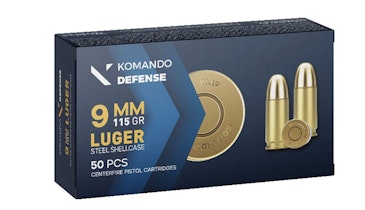In the age of digital, customers are exposed to an estimated 2,900 marketing messages a day according to the Direct Marketing Association.
The question becomes how do we, as retailers, break through with our message? Often that has meant moving away from simple and reliable direct mail with heavy reliance on email marketing and social campaigns. The theory and promise was that companies could move from an average delivered cost for direct mail of 50¢ per mail piece to a exponentially lower average cost of 9¢ per thousand.
On paper it looked like the marketing promised land for those wanting to continually promote to customers. The problem, of course, was that everyone had the same idea and a barrage of emails hit customers in boxes, the CAN-SPAM law passed, spam filters were invented and sales conversion of email offers went through the floor.

Are customers waiting for your direct mail campaigns to learn about great deals or information about new products? Making the right pitch can turn the tide. (Photo: Tony Arnold)
Emailed customers of today feel very much like our parents did in the 1970s when opening their postal mail box with 30 or so irrelevant promotions. Today, we get to weed through Nigerian prince scams and social feed update notifications among our credit card statements and other important notices. Way back in the olden days, we even had a term for that bloated mass of physical mail wedged into our steel mail boxes: “junk mail.”
Many business owners and marketers still hold that junk mail bias toward direct mail, but in reality, that good old fashioned wood pulp and ink is far more effective than ever with typical response rates that email could only dream of. Over the past 10 years, I have initiated many direct mail tests and have been increasingly surprised with record setting sales conversion rates of physical mail. The reason for direct mail returning is simple: Almost every company moved to email, so the old fashioned steel mailbox is so empty that any direct mail promotions actually do get read. In marketing terms, the percentage of mailbox open rate is higher.
In addition to Baby Boomers and Gen X age groups now reading more of any direct mail sent, Millennials tend to love the tactile realism of printed material. Millennials were raised during a time where everything in their lives was digital, social and non-physical-based marketing. A Gallup Poll noted more than 95 percent of Millennials feel positively about physical mail and like receiving it.
Other research further notes that nearly 90 percent see print as more official/truthful than digital. If you ask your parents if they feel the same way, the results will be wildly different. For the marketer and retailer attempting to capture the percentage of wallet of the largest age group of customers since the now-retiring Baby Boomers, this is critical and rather fantastic news. Direct mail is not dead, but we must still tune the messages for them to be highly effective.
Targeting customers with the best most appropriate offer, just like marketers should be doing with email, is still critical to the success of direct mail; as is the format and coordinating with other marketing programs. An example for the sporting industry would be a postcard advertising binoculars to the handgun shooter segment or tactical gear to the hunter segment — neither makes sense. The handgun shooter would likely respond far better to tactical gear, while the hunter would jump on a new set of binoculars.
Always positioning a relevant message to the right customer will always be a rule regardless of the marketing channel and is still critical with direct mail. Most mail vendors can add in a customer name to personalize the mail piece at little or no charge, which can net an average 135 percent increase in conversion according to testing done by Canon. There is an exponential compounding impact on conversion with each and every increase in relevancy and personalization.
What Format To Use
The format of the direct mail can also have a huge impact. The A10 business envelope and marketing letter still nets the worse conversion to sale when compared to small, high gloss postcards. Large format 6x11-inch postcards are among the best performers and offer a lot of eye catching real estate to creatively push your offer.
Even if customers have a proclivity to sort mail over a trash can, the in-your-face message of a postcard requires zero work from the customer to read it during that critical two second “junk-it” or “keep-it” decision process. Just by moving several companies from envelopes to large format postcard, mailers increased conversion by an average 30 percent.
An odd, but extremely noteworthy phenomenon noted by Non-profit PRO is that a combined digital ad and direct mail strategy increases conversion by 28 percent. This was recently tested within my company and by several CMO peers and we all were able to test and confirm that finding. Even a simple ad within social plus a direct mail can have a huge compounding impact in revenue. Always think about layers of digital, direct mail, broadcast and print marketing and assure that they always work together to drive the same overall message.
Automation is one of the easiest ways to manage direct mail programs and also the easiest way to deliver pinpoint personalization. The goal is to have a predetermined set of offers and postcards set to run that really do not change over the course of a year and that run each month or even biweekly. Scoop up all the customers who have purchased in the past month, and send them the appropriate qualifying offer. That could be super-awesome deals specifically on 9mm ammo for every customer who purchased a 9mm handgun in the past month — same idea for all the other calibers and shotgun purchases.
How about a range pack kit or case offer for all new gun buyers, or gun lube kit? Most mail vendors will manage all the headaches as long as you label each list that is sent monthly. The idea is to test which of your offers work and always work to identify new ideas. The key is to keep it relevant and automated to make it easy on yourself and usually mail vendors will discount more heavily ongoing marketing programs.
The last piece of advice on direct mail, or any marketing offer, is to ensure you have some type of coupon code and analytics that allows your business to track which offer was the most effective. A simple sales report should highlight your ROAS, or Return on Ad Spend, for each campaign. ROAS is the gross revenue generated by the total campaign divided by the cost of the campaign. A campaign generating $10K in sales with a campaign cost of $250 would net a 40x (or 40,000 percent) Return on Ad Spend, which sounds awesome.
Each retailer has its own benchmark measurements to compare whether this is good or bad and should do the calculations. If you have a consistent 5 percent operational profit margin for your entire business, then this campaign would have still be a great performer: $10K campaign sales x 5 percent = $500 profit, and the campaign only cost $250. If you have a lower 2.5 percent operational profit margin, you might want to find a better-performing campaign, because the cost of marketing is consuming all your profit.
Direct mail is far from dead, and in many cases still outperforms email and social, all while being complementary to any other marketing campaigns. Direct mail also has the singular one-to-one marketing advantage that a business can still easily and inexpensively purchase customer lists containing each and every customer within a zip code or radius, a feat which email and digital still has not mastered.






